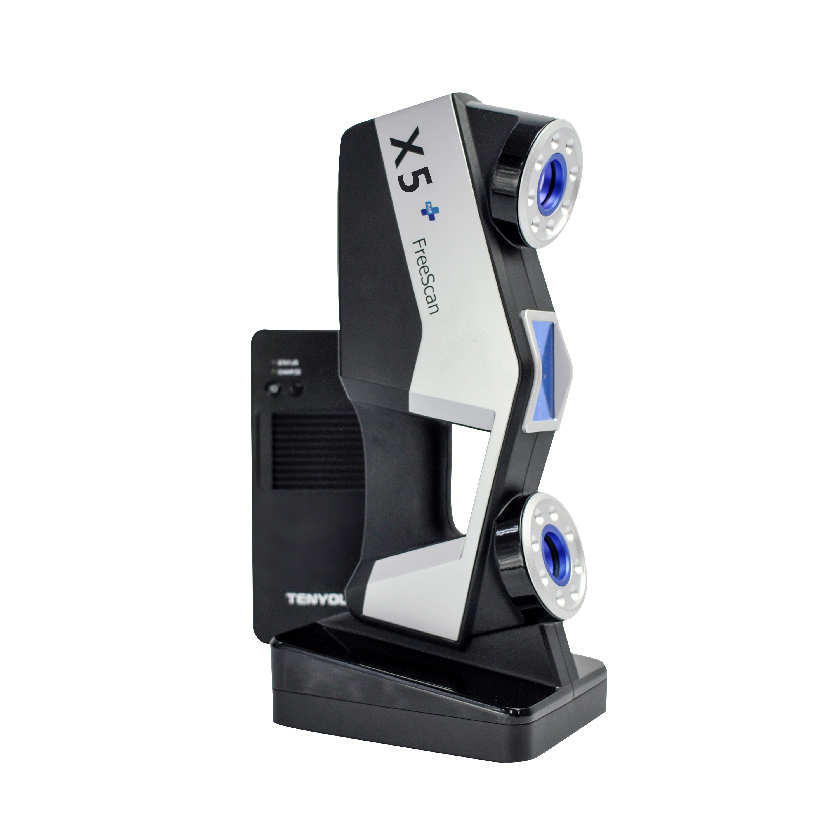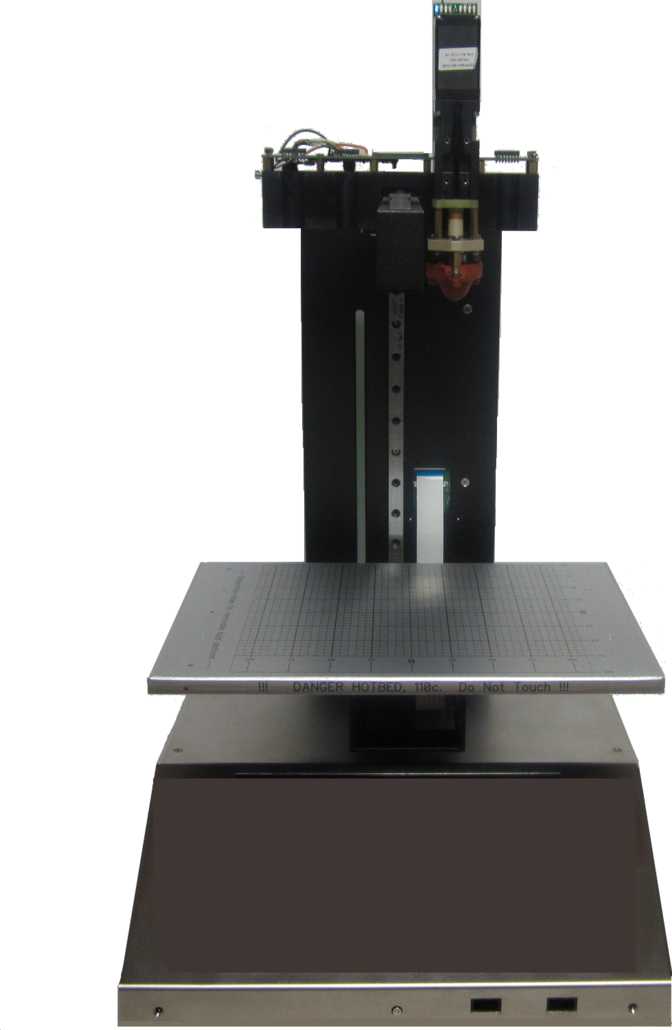3D printer resin flexible
How flexible is a flexible 3d-printing resin
Recent developments in resin based 3D-printing materials made it possible to 3D-print flexible, elastic and soft resins. Before these developments, flexible materials or TPU (Thermoplastic polyurethanes) were only available for FDM and laser sinter printers (SLS). With the development of flexible, elastic and soft 3D-printing resins for SLA, DLP and MSLA 3D-printers, everybody can now make their custom flexible rubber-like parts. Earlier we published an article about the different flexible or elastic resins available and how they can help for your project. In this article we try to answer the question: How Flexible is a flexible resin? Additionally, the differences between Liqcreate Premium Flex and Flexible-X are explained. Learn in the link how manufacturers use flexible 3D-print resin to make rubber-like parts.
How flexible is flexible resin?
We often get the question how flexible a flexible resin is. This question seems easy, but is quite difficult to answer. For strong resins, the tensile of flexural strength can be measured and expressed into a number. For flexibility, there are not that clear metrics to classify the resins.
How to measure flexible 3d-printing resin?
There are a few measurements that will define resin properties of flexible resins, more details are explained here and in this article. The following properties define how flexible a resin is: Shore A Hardness, Elongation at break, Tear Strength and Compression set.
Let’s start with the easiest one to measure and understand, the Shore A Hardness. The Shore A says something about the surface hardness of a material. A pointed steel pin is pressed with a pre-set time and pressure on the surface of the 3D-printed flexible resin part. The amount of indentation tells something about the surface hardness. A lower number means a softer surface.
The amount of indentation tells something about the surface hardness. A lower number means a softer surface.
The Elongation at break is also an important measurement. Here tensile test-bars area pulled apart and the percentage of elongation before breaking is measured. A higher number means that the material can stretch further before breaking. The amount of force for breaking or surface hardness does not play a role in this number.
For most engineering flexible 3D-printing resins, the part must withstand some regular use or force. The number of Tear Strength gives a good idea about the forces put on a part before it starts to tear. Higher numbers are often achieved by more rigid materials (higher shore value) and are difficult to compare. For extreme conditions, a material with high tear strength is preferred.
For a lot of rubber like applications like seals, the compression set is of major importance. This will measure how much a part of printed flexible resin will return to its original shape after being compressed for a set time and temperature. If it is difficult to imagine how these properties for flexible resins play a role, you can also look at the video’s below and above to compare how the two different flexible Liqcreate resins compare.
If it is difficult to imagine how these properties for flexible resins play a role, you can also look at the video’s below and above to compare how the two different flexible Liqcreate resins compare.
What are the difference between Premium Flex and Flexible-X?
Liqcreate Premium Flex and Flexible-X are two completely different products, both with their own advantages and applications. In mechanical properties and print behavior, there are three main differences. To compare both flexible resins, click on the link above and match the properties.
- – Flexible-X has a higher elongation
- – Flexible-X has a significantly higher tear strength
- – Premium Flex has an increased print speed, more than 2-3x faster than Flexible-X.
 Find the 3D-print parameters for flexible resin on your 3D-printer here.
Find the 3D-print parameters for flexible resin on your 3D-printer here.
For prototyping and not so demanding applications, Premium Flex could work well. For more demanding applications Flexible-X is advised due to its improved tear strength.
Flexible 3D printer resin - 3DJake International
Sort byRelevanceBestsellersCustomer ReviewsPrice, Low to HighPrice, High to LowNew arrivalsHighest Discount
-
Liqcreate Premium Flex 250 g, 1.000 g- High elongation
- Soft-touch
- Easy to print
-
Liqcreate Flexible-X 250 g, 1. 000 g
000 g- High elasticity
- Good tear resistance
- Especially suitable for industrial parts
-
Formfutura Engineering LCD Series Flex 82A Resin Clear 500 g- Combines semi-flexibility with strength
- Shore hardness 82A
- High printer compatibility
-
Phrozen Flex Resin - Beige 500 g- Bright colour
- For prototyping and modeling
- Easy to paint
-
Formfutura Engineering LCD Series Flex 63A Resin - Clear 500 g- Excellent flexibility
- High elongation properties
- Very elastic
-
PhotoCentric3D UV DLP Tensile- High tensile strength
- For UV DLP 3D printers
All prices incl. VAT.
VAT.
Types of resins for photopolymer 3D printer, characteristics, application
In recent years, the introduction of photopolymer printers in various areas of production is gaining more and more popularity. In order for the printer to reach its full potential, it is necessary to choose the right material - photopolymer resin.
Now there is a wide variety of resins designed to solve a wide range of problems. Sometimes it can be difficult not to get confused in such a variety of materials. It is conditionally possible to divide photopolymer resins into several types - standard, engineering, dental, jewelry (burned).
Standard resins
Standard resins are well suited for making decorative models. They are strong and hard enough for making miniatures, master models, paintable figures or mock-ups, but their strength is usually not strong enough for functional products.
But standard resins are different from each other. Some of them can be washed not with alcohol, but with plain water, there are transparent types of resins or, for example, with a wide color palette.
Standard
Compared to other types of photopolymers, standard resins have a richer color palette. The main advantages are an inexpensive price, good detail and fast curing time.
ESUN Standard
A good resin for professionals and beginners who are just getting acquainted with photopolymer printing. The advantages of ESUN Standard are a large palette of colors, no smell and fast printing speed.
ESUN Standard is suitable for printing decorative models or any other product that will not be subjected to heavy physical exertion.
Print Technology: DLP/LCD/LED
UV wavelength: 395-405nm (transparent 395-410nm)
Shore hardness: 80-82 D
Impact strength according to Izod: 18 - 40 J/m
Bending strength: 46-72 Mpa
Modulus of elasticity: 1000 - 1400 MPa
Elongation at break: 28-35%
Exposure time per layer (recommended): 5-10 sec.
Color palette: white, black, gray, red, blue, yellow, green, light green, flesh, orange, transparent.
Volume: 0.5 kg, 1 liter.
Deadpool figurine
Bust of a military man
Moving castle, miniature
Users note good detailing, a good balance of strength and light elasticity, and excellent adhesion to the platform. The print time of the layer corresponds to the one declared by the manufacturer (5-10s) even on 3D printers with a weak UV source.
Of the minuses - sometimes the resin can be difficult to stir and a fine suspension comes across. This does not reduce print quality, but it does make me nervous. The gray color is slightly transparent, many users would like the color to be more “dense”.
ESUN eResin-PLA
eResin-PLA is based on PLA monomer, familiar to many from FDM printing. This makes the resin environmentally friendly and the finished product very tough and scratch resistant.
Resin is well suited for decorative items, master models or functional models without load.
Print Technology: DLP/LCD/LED
UV wavelength: 395-405nm
Shore hardness: 75-80 D
Elongation at break: 20-50%
Modulus of elasticity: 600 - 800 MPa
Impact strength according to Izod: 15 - 32 J/m
Tensile strength: 35-50 Mpa
Exposure time per layer (recommended): 15-20 sec.
Color palette: white, black, gray, red, blue, yellow, green, light green, flesh, orange, transparent.
Volume: 1 liter
Shoe model
Figurine of a cartoon girl
Play miniature
Non-standard focusing rings for lens
Phrozen Aqua 4K
The Phrozen Aqua 4K is specifically designed to unlock the full potential of 4k resolution photopolymer printers. A pleasant bonus is the almost complete absence of shrinkage.
Resin is well suited for precision printing of decorative patterns. The manufacturer specifies that all properties of the resin are revealed when using printers with high resolution, such as Sonic Mini 4K / Sonic Mighty 4K.
The manufacturer specifies that all properties of the resin are revealed when using printers with high resolution, such as Sonic Mini 4K / Sonic Mighty 4K.
Print Technology: DLP/LCD/LED
UV wavelength: 395-405nm
Shore hardness: 77 D
Color palette: gray, ivory.
Volume: 1 kg
Armor printed in gray resin Phrozen Aqua 4K
Bust Predator
Figurine war with a bear, to demonstrate the capabilities of Phrozen Aqua 4K
Phrozen Beige Low Irritation
This resin is hypoallergenic. Phrozen Beige Low-Irritation has passed the ISO-10993 10 test, which means that the resin does not contain heavy metals and the finished models can directly contact the human body.
The resin can be used in dentistry or for products that will come into contact with the skin.
Print Technology: DLP/LCD/LED
UV wavelength: 395-405nm
Color palette: beige
Volume: 0. 5 kg
5 kg
Decorative figurine
Jaw
ESUN Precession Model
Resin is designed for fast printing of high-precision models. In addition, finished products are tough and can withstand heat up to 80 degrees.
ESUN Precession Model is a good choice for models that need high detail.
Print Technology: DLP/LCD/LED
UV wavelength: 405 nm
Shore hardness: 85 D
Elongation at break: 12.1%
Bending strength: 77 Mpa
Tensile strength: 335-410 Mpa
Color palette: red.
Volume: 1 liter
DC Universe Riddler's Head
Miniature model of ICE
Clear resins
Clear resins are present in other photopolymer ranges, but may become yellow or cloudy over time. If optical transparency without yellowness is important in the finished model, then you should pay attention to special polymers.
Phrozen SC-801 Clear
The main advantage of Phrozen SC-801 Clear is its optical transparency. Models made from Phrozen SC-801 Clear will not become hazy or yellow during post-curing or use.
This photopolymer is suitable for the manufacture of durable and accurate models for which optical transparency is important.
Print Technology: DLP/LCD/LED
UV wavelength: 405 nm
Shore hardness: 70 D
Color palette: transparent
Volume: 1 liter
Material transparency model
Left product made of Phrozen SC-801 Clear, right RESINMAGIC3D High-Grade Clear
Figure printed with Phrozen SC-801 Clear
Miniature bottles printed for a articulated doll. Left made from Phrozen SC-801 Clear, right made from another polymer.
Washable
Finished models made on a photopolymer printer are recommended to be washed from photopolymer residues with alcohol. There are situations where this is not acceptable, such as when the printer is being used in schools. For such cases, manufacturers have created the Washable line. Washable are resins that can be washed with plain water.
There are situations where this is not acceptable, such as when the printer is being used in schools. For such cases, manufacturers have created the Washable line. Washable are resins that can be washed with plain water.
ESUN Water Washable
ESUN Water Washable is as strong and precise as ESUN Standard resins. The only difference is that the finished product can be washed not with alcohol, but with plain water.
ESUN Water Washable is well suited for printing at home or in educational institutions due to its low toxicity and odorlessness.
Print Technology: DLP/LCD/LED
UV wavelength: 395-410 nm
Shore hardness: 76 D
Tensile strength: 68 MPa
Elongation at break: 5-10%
Bending strength: 45-70 MPa
Modulus of elasticity in bending: 900-1400 MPa
Izod impact strength: 18-39 J/m
Color palette: white, transparent, flesh, gray, black.
Volume: 0. 5 kg
5 kg
Rings and pendant printed in clear ESUN Water Washable
Fox figurine
Phrozen Water Washable
Phrozen Water Washable compares favorably with other water-washable resins in terms of strength, durability, and short flash-over time.
The resin is suitable for making prototypes and other models at home and in educational institutions where it is undesirable to use strong-smelling alcohols for washing.
Print Technology: DLP/LCD/LED
UV wavelength: 405 nm
Shore hardness: 80 D
Color palette: gray, black.
Volume: 1 kg
Bust made from Phrozen Water Washable
Alien printed from Phrozen Water Washable
Bust of Spiderman
Wanhao Water washable
It is a resin with high resolution and good hardness. Wanhao Water washable has very little shrinkage and a wide range of colors.
Wanhao Water washable has very little shrinkage and a wide range of colors.
Resin is well suited for printing master models and decorative models when it is not possible to use alcohol to wash the final product.
Print Technology: DLP/LCD/LED
UV wavelength: 395~420nm
Shore hardness: 75D
Color palette: white, transparent, black, gray
Volume: 0.5 kg, 1 kg
Han Solo in transparent Wanhao Water washable
Test model of transparent Wanhao Water washable
Test patterns in different colors Wanhao Water washable
Engineering
Previously, photopolymer printers were mainly used for making master models and products with high accuracy. Now they face a wider range of tasks. It is much more convenient to make a ready-made, functional model right away. For this, engineering photopolymer resins with improved characteristics have been developed. Depending on the application required, they can be harder, heat resistant and durable than standard resins.
Depending on the application required, they can be harder, heat resistant and durable than standard resins.
Reinforced
These are polymers with improved characteristics - for example, high heat resistance or impact strength. They can be used to produce functional prototypes, engineering models, etc.
Phrozen TR250-LV
The Phrozen TR250-LV has been specifically designed to meet engineering challenges. In addition to high strength and hardness, the resin has increased heat resistance and can withstand heating up to 150 degrees.
The Phrozen TR250-LV is suitable for the production of models for subsequent thermoforming or products that require increased heat resistance.
Print Technology: DLP/LCD/LED
UV wavelength: 405 nm
Shore hardness: 79D
Tensile strength 25 MPa
Izod impact strength: 6.31 kJ/m2
Color palette: gray
Volume: 1 kg
Jaw Layout
Orc Bust
Phrozen ABS-like
This resin is similar in characteristics to ABS plastic, familiar to many from FDM printing.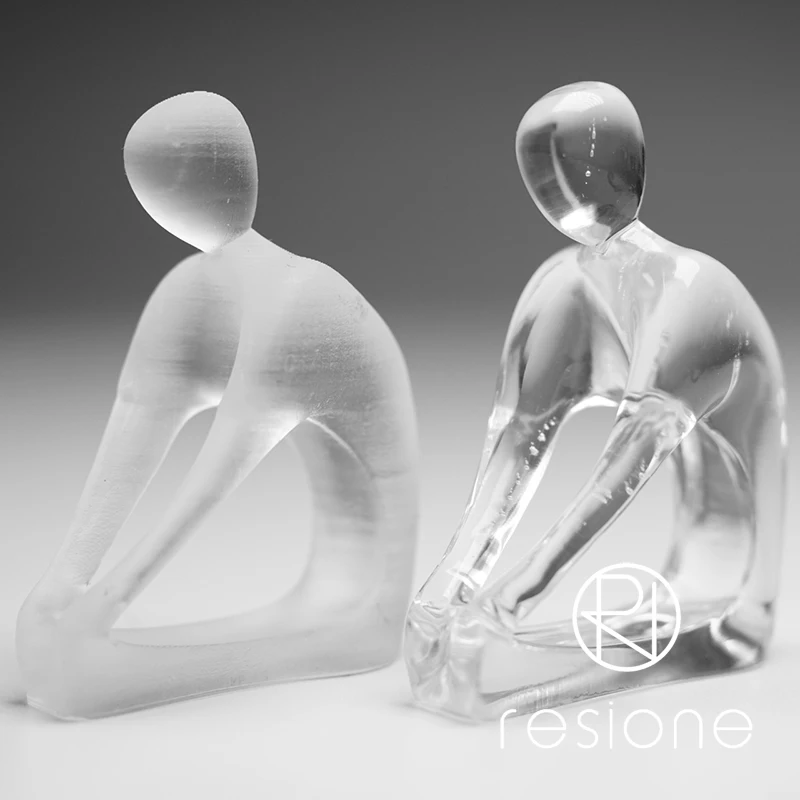 There is a white color in the palette, this allows, if necessary, to easily paint the finished product.
There is a white color in the palette, this allows, if necessary, to easily paint the finished product.
Phrozen ABS-like is suitable for printing functional models and prototypes.
Print Technology: DLP/LCD/LED
UV wavelength: 405 nm
Shore hardness: 79D
Izod Impact Strength: 2.32 kJ/m2
Color palette: gray, white
Volume: 1 kg
Skull Model
Weapons for miniature figures
1/4 mask
Phrozen Rock-Black Stiff
When creating Rock-Black Stiff, emphasis was placed on strength, wear resistance and heat resistance (up to 97 degrees). Models are strong and slightly flexible to withstand shock loads.
Print Technology: DLP/LCD/LED
UV wavelength: 405 nm
Shore hardness: 81D
Elongation at break: 4%
Izod impact strength: 2. 68 kJ/m2
68 kJ/m2
Color palette: black
Volume: 1 kg
Elf bust
Bust printed in Phrozen Rock-Black Stiff
Phrozen Nylon Green Tough
Photopolymer is an analogue of nylon. Nylon is a very strong and wear-resistant material, familiar to many from FDM printing. Products are very durable and resistant to stress. Finished models printed in Nylon Green Tough can be folded.
Suitable for the manufacture of finished products or functional prototypes.
Print Technology: DLP/LCD/LED
UV wavelength: 405 nm
Shore hardness: 68D
Elongation at break: 130%
Tensile strength: 19 MPa
Izod impact strength: 23.79 kJ/m2
Color palette: green
Volume: 1 kg
Phrozen Nylon Green Tough Vase
Test model
Spectacle frame
Phrozen TR300 Ultra-High Temp
TR300 Ultra-High Temp allows you to quickly produce durable, shock and heat resistant products (up to 160 degrees). The photopolymer compares favorably with its competitors by its short exposure time (on 3D printers of the Phrozen Sonic series, 1.3 seconds per layer).
The photopolymer compares favorably with its competitors by its short exposure time (on 3D printers of the Phrozen Sonic series, 1.3 seconds per layer).
Phrozen TR300 is suitable for the manufacture of heat-resistant and durable products. For example, it can be a model for subsequent thermoforming or manufacturing an industrial layout.
Print Technology: DLP/LCD/LED
UV wavelength: 405 nm
Shore hardness: 80D
Tensile strength: 32MPa
Izod impact strength: 8 kJ/m2
Elongation at break: 2%
Color palette: gray
Volume: 1 kg
Phrozen Onyx Rigid Pro410
The main properties of models made from Onyx Rigid Pro410 are amazing detailing and durability. The resin was developed in partnership with Henkel and is intended primarily for home workshops.
Photopolymer is perfect for models with an abundance of small details that need high detail. Or for engineering/functional models where high accuracy and strength are important.
Print Technology: DLP/LCD/LED
UV wavelength: 405 nm
Color Palette: Black
Volume: 1 kg
Tablet stand
Fruit bowl
Wall mounted spice holder
Wall hanger
Flexible
Products made from such resins will look like silicone or rubber. Such photopolymers make it possible to obtain flexible and durable functional products resistant to tearing.
Phrozen Biege Flex
This is a resin designed for products that need to be strong and slightly flexible. Phrozen Biege Flex is suitable for functional models that need some flexibility.
Print Technology: DLP/LCD/LED
UV wavelength: 405 nm
Shore hardness: 65D
Tensile strength: 40 MPa
Modulus of elasticity: 192 MPa
Color palette: beige
Volume: 0.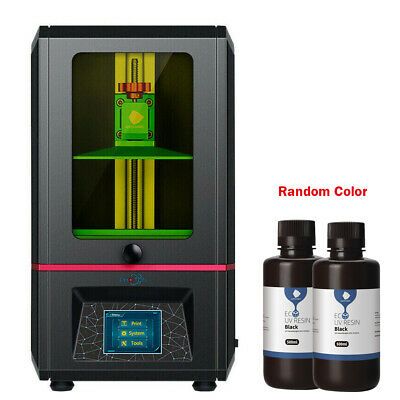 5 kg
5 kg
Bust of Harley Quinn
Miniature from Phrozen Biege Flex
Functional carabiner
HARZ Labs Industrial Flex
By its properties, finished products from HARZ Labs Industrial Flex resemble polyurethane. Products from it are elastic and very durable.
HARZ Labs Industrial Flex is suitable for the manufacture of gaskets or any other model where softness and tensile strength are important.
Industrial Flex can be used as an additive for other HARZ Labs resins. This allows you to increase the flexibility and strength of the finished model. Depending on the resin ratio, different degrees of flexibility can be achieved in the finished product.
Print Technology: DLP/LCD/LED
UV wavelength: 405 nm
Shore hardness: 63D
Shrinkage: 0.5%
Elongation at break: 103%
Tensile strength: 13 N/mm2
Color palette: transparent
Volume: 0. 5kg 1kg
5kg 1kg
Various gaskets printed from HARZ Labs Industrial Flex
ESUN Flex
Flexible and durable material with good wear resistance. Good tear resistance and accuracy make ESUN Flex suitable for engineering models.
For example, products that must be strong and flexible at the same time. These can be engineering prototypes or functional models.
Print Technology: DLP/LCD/LED
UV wavelength: 405 nm
Shore hardness: 85-90 A
Shrinkage: 6.9%
Elongation at break: 100-150%
Bending strength: 77 Mpa
Tensile strength: 390-320 kN-m
Color palette: transparent yellow
Volume: 0.5 kg
Test model from ESUN Flex
Dental resins
From the very beginning of its existence, photopolymer printers have taken the place of indispensable assistants in the dental industry, therefore, in the assortment of many companies that manufacture photopolymer resins, there are materials intended for use by dentists.
Special photopolymers
These are special polymers that are focused on solving specific problems. No one forbids using them for other than their intended purpose, but they fully reveal their potential precisely in the task for which they were created.
Harz Labs Dental Soft
Dental Soft was created as a material to simulate gums in demonstration models. The finished print is pink in color and has high strength and chemical resistance. Despite its flexibility, the finished model will be resistant to deformation. Harz Labs Dental Soft is certified for medical use.
The material is suitable for gum printing or other medical applications.
Print Technology: DLP/LCD/LED
UV wavelength: 405 nm
Shore hardness: 87-90D
Shrinkage: <0.5%
Elongation at break: 68%
Tensile strength: 1.2 N/mm2
Color palette: pink
Volume: 0.5 kg, 1 kg
Gums from Harz Labs Dental Soft
Gums from Harz Labs Dental Soft
NextDent Gingiva Mask
Another gum simulation resin from NextDent.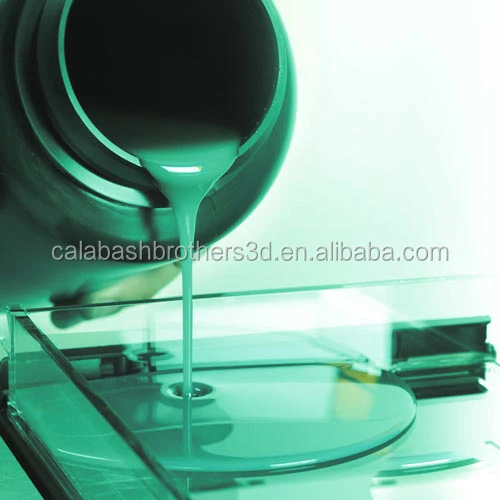 Gingiva Mask is a flexible and durable resin that blends beautifully with model material.
Gingiva Mask is a flexible and durable resin that blends beautifully with model material.
The resin is suitable for various models in the dental industry.
Print Technology: DLP/LCD/LED
UV wavelength: 405 nm
Shore hardness: 60 - 75 A
Elongation at break: 40 - 60%
Color palette: pink
Volume: 1 kg
Gingiva made from NextDent Gingiva Mask
Part of the gum made from NextDent Gingiva Mask
Jaw Demo with NextDent Gingiva Mask Inserts
Harz Labs Dental Clear
Products from this resin are durable and hard. The main feature is the resin is transparent, without turbidity and yellowness. Harz Labs Dental Clear is certified for medical use.
This photopolymer is suitable for the manufacture of surgical templates, demonstration models and even aligners.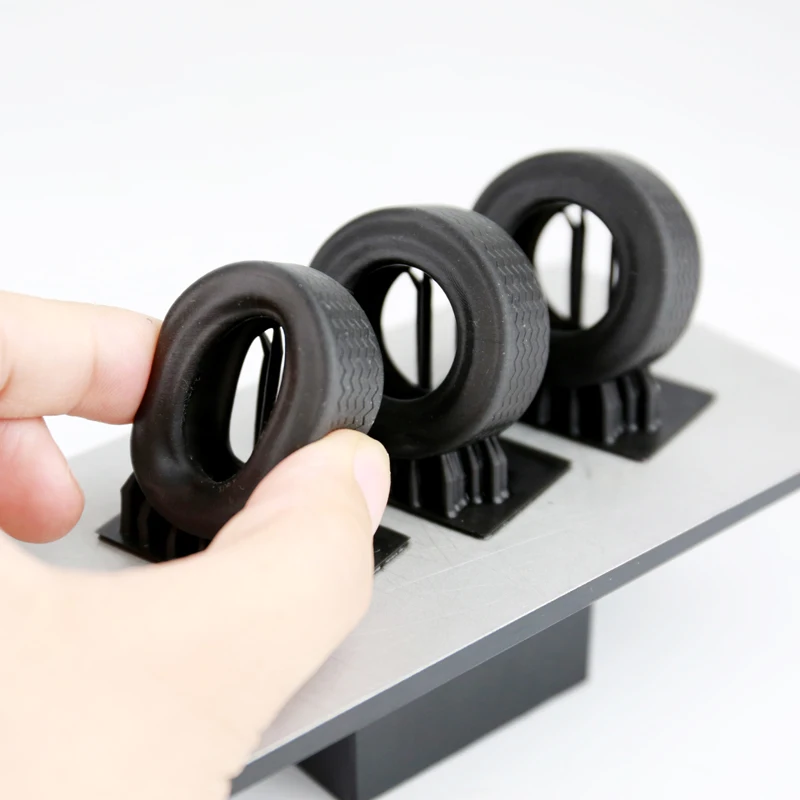
Print Technology: DLP/LCD/LED
UV wavelength: 405 nm
Shore hardness: 90-92D
Elongation at break: 4-6%
Shrinkage: less than 0.5%
Color palette: transparent
Volume: 0.5 kg, 1 kg
Jaw Demo Model
Piece of jaw printed from Harz Labs Dental Clear
Dental Yellow Clear
Very similar in its properties to Harz Labs Dental Clear - just as strong and hard. The only difference is that the color of the resin is not crystal clear, but yellow. The resin is certified for use in medicine.
Dental Yellow Clear is suitable for making aligners or demonstration models.
Print Technology: DLP/LCD/LED
UV wavelength: 405 nm
Shore hardness: 90-92D
Elongation at break: 4-6%
Shrinkage: less than 0.5%
Color palette: transparent yellow
Volume: 0. 5 kg, 1 kg
5 kg, 1 kg
Gingiva pad made of Dental Yellow Clear
Jaw models
Dental Yellow Clear Demonstration Product
Burnout
In addition to specialized resins in dentistry, low-ash burnable or smelted materials are needed for direct casting.
Before casting, be sure to read the instructions from the manufacturer. Each resin has its own burnout cycle in order to obtain a good casting quality.
ESUN Castable Dental
ESUN Castable is designed for direct casting in dentistry. Finished products are smooth and hard. When burning, the ash content is practically absent.
High precision allows ESUN Castable to be used for crowns, bridges and other castings.
Print Technology: DLP/LCD/LED
UV wavelength: 405 nm
Shore hardness: 80D
Elongation at break: 11-20%
Bending strength: 49-58 Mpa
Impact strength according to Izod: 44 - 49 J/m
Color palette: green
Volume: 1 kg
Crowns printed from ES
ESUN Castable jaw
Example of printed and molded model
Phrozen Wax-like Dental Green
Wax-like Dental Green is a waxy resin with low shrinkage and zero ash content. Due to the low shrinkage, the finished products are very accurate, and the matte surface will help to see even small imperfections.
Due to the low shrinkage, the finished products are very accurate, and the matte surface will help to see even small imperfections.
Print Technology: DLP/LCD/LED
UV wavelength: 405 nm
Color palette: green
Volume: 0.5 kg
Ring made from Phrozen Wax-like Dental Green
HARZ Labs Dental Cast Cherry
HARZ Labs Dental Cast Cherry was developed for direct casting of dental products. With the correct burnout cycle, it is possible to achieve almost zero ash content. The photopolymer is certified for medical use.
Dental Cast Cherry is suitable for casting metal or ceramic crowns and bridges.
The manufacturer recommends the use of phosphate-based phytomass, because they can be used at high temperatures, which are required for high-quality burning of the model.
Print Technology: DLP/LCD/LED
UV wavelength: 405 nm
Shore hardness: 40-50D
Shrinkage: less than 1%
Color palette: red
Volume: 1 kg
Crown models printed with Dental Cast Cherry
Cast crowns
NextDent Cast
It is an easy-to-burn-out resin with zero ash content. Designed for the manufacture of burn-out dental models.
Designed for the manufacture of burn-out dental models.
Print Technology: DLP/LCD/LED
UV wavelength: 405 nm
Shore hardness: 80-90D:
Color palette: red
Volume: 1 kg
Crowns made from NextDent Cast
Demo Model
DETAX Freeprint cast UV
High precision resin designed for fast manufacturing of dental products. Finished products can be used for direct casting. DETAX Freeprint cast UV burns out ashless even with large casting volumes. For molding, it is recommended to use phosphate-based masses.
Print Technology: DLP/LCD/LED
UV wavelength: 378-388 nm
Color palette: red
Volume: 1 kg
Overlay made of DETAX Freeprint cast UV
Crowns made from DETAX Freeprint cast UV
Burnout resins
In addition to dentistry, 3D printers have firmly established themselves in the jewelry industry. 3D printing allows you to create complex products much faster than classical methods (manual wax cutting, CNC machine). Burnt-out resins were created especially for jewelers.
3D printing allows you to create complex products much faster than classical methods (manual wax cutting, CNC machine). Burnt-out resins were created especially for jewelers.
ESUN Castable for jewelers
Photopolymer specially designed for printing and casting small models with high detail. Products from ESUN Castable are smooth, and almost zero ash content makes it easy to get the desired product in the metal.
The resin is suitable for printing jewelry - rings, pendants, earrings and for other burn-out models, in which accuracy and perfect surface quality are important.
Print Technology: DLP/LCD/LED
UV wavelength: 395-405nm
Shore hardness: 60 D
Color palette: yellow, green
Volume: 1 kg
Ring printed from ESUN Castable
Ring from ESUN Castable
Phrozen Wax-like Castable Violet
Waxy polymer with low shrinkage and zero ash content. Products made of Phrozen Wax-like Castable Violet have a nice matte surface, which will show the slightest imperfections.
Products made of Phrozen Wax-like Castable Violet have a nice matte surface, which will show the slightest imperfections.
Wax-like Castable is suitable for making any castable models.
Print Technology: DLP/LCD/LED
UV wavelength: 405 nm
Color palette: purple
Volume: 0.5 kg
Ring printed in Wax-like Castable and finished casting
Wax-like Castable Openwork Rings and Precast Castings
Wax-like Castable pendant and finished product
HARZ Labs Jewelry J-Cast
This is a photopolymer designed for the manufacture of burn-out models for subsequent casting in metal. High precision, low shrinkage (less than 1%) and low ash content (less than 0.1%) make it possible to print even very small products without distortion.
HARZ Labs Jewelry J-Cast is suitable for printing jewelry. Due to its high thermoplasticity, the photopolymer can be burned out over a wide temperature range. The result is a product with a smooth surface.
The result is a product with a smooth surface.
Print technology: DLP/LCD/LED
UV wavelength: 405 nm
Shrinkage: less than 1%
Color palette: blue
Volume: 1 kg
Ring molded with a model made from HARZ Labs Jewelry J-Cast
Totals
A wide variety of photopolymer materials make it possible to make a 3D printer an almost universal tool for the production of products of various directions. 3D printing not only helps to shorten the production chain in large enterprises, but also becomes an indispensable tool for small home workshops.
When working with photopolymer resins, do not forget about safety precautions.
-
Try to print in a well-ventilated area.
-
Read the information about the resin on the manufacturer's website, important nuances may be indicated there. For example, some resins cannot be immersed in isopropyl alcohol for a long time.

Choosing a liquid photopolymer for a 3D printer. Classification of materials for SLA/DLP 3D printing.
Contents:
- Introduction
- SLA Overview
- SLA standard resins
- Standard photopolymer resin - Standard
- Clear Photopolymer Resin - Clear
- Engineering photopolymer resins
- Rigid photopolymer resin - Tough (like ABS)
- Durable photopolymer resin - Durable (PP-like)
- Heat resistant photopolymer resin - Heat resistant
- Rubber-like photopolymer resin - Rubber-like (Elastic)
- Ceramic photopolymer resin - Ceramic filled (Hard)
- How to choose the right resin for your application
- Dental and medical SLA resins
- Medical Device Photopolymer Resin - Custom Medical Appliances (Class I Biocompatibility)
- Dental Long Term Biocompatible Resin (Class IIa Biocompatible)
- Class I biocompatibility vs Class IIa biocompatibility
- Cast SLA resins
- Cast resin for jewelry making
- Generalized rules
Hello everyone, Friends! With you 3DTool!
This article compares photopolymer resins using Formlabs SLA 3D printing products – standard standard
Catalog of photopolymer 3D printers
Photopolymers from FormLabs
Detailed review of the Formlabs Form 3 3D printer
Introduction
The stereolithography prints plastic parts with high resolution, good fine detail, and a smooth surface. Due to the variety of photopolymer resins available for SLA, this technology is used in many different industries:
-
"Standard" photopolymers are used for prototyping
-
Engineering photopolymers have certain mechanical and thermal properties
-
Dental and medical photopolymers have biocompatibility certificates.
-
Cast photopolymers have a zero ash content after burning.
SLA 3D printing resin overview
SLA uses a laser to cure a liquid photopolymer resin. This process is called photopolymerization. Various combinations of polymers and other additives that are part of the resin allow you to get different material properties.
The main advantages and limitations that are common to all resins in SLA 3D printing are:
Benefits:
Weaknesses:
Base Resins for SLA
Post-Processing SLA/DLP 3D Printing Article
Standard photopolymer resin - Standard
Standard resins produce parts with high stiffness, detail and a smooth surface. The low cost of resins, from $250 per liter, makes them ideal for prototypes.
The color of the resin also affects its properties. For example, in FormLabs products, gray resin is suitable for models with fine details, and white resin for parts that require the smoothest possible surface.
Benefits of using Standard resins:
Cons Standard:
Also included in the class of "Standard" photopolymer resins from FormLabs is the Color KIT - a set of special dyes and "Color Base" photopolymer resin for mixing and obtaining a variety of color solutions. This eliminates the need for painting parts after 3D printing.
This eliminates the need for painting parts after 3D printing.
FormLabs Engineering Photopolymer Resins
Engineering resins have a range of properties for injection molded plastics.
All engineering resins require additional UV curing, such as using the Form Cure, to achieve their maximum properties.
Tough photopolymer resin - Tough (similar to ABS)
Tough resin was developed for models that need to withstand high loads and be durable.
This material produces strong, shatter-resistant parts and functional prototypes such as snap-on housings.
Pros:
Cons:
Ideal for: functional prototypes, mechanical parts
Durable photopolymer resin - Durable
Durable resin is a wear-resistant and flexible material with mechanical properties similar to polypropylene.
Durable photopolymer produces models with a smooth glossy surface and high resistance to deformation.
Durable Resin is ideal for:
- Bushings and bearings;
- Various functional compounds
Pros:
Cons:
-
Not suitable for thin wall parts (recommended minimum wall thickness 1mm)
-
Low heat distortion temperature
-
Low flexural strength (lower than hard resin)
Ideal for: functional prototypes.
Refractory Photopolymer Resin - Formlabs High Temp Resin
The heat resistant resin is ideal for parts that require high temperature resistance and operate at high temperatures.
Formlabs High Temp Resin provides the highest melting point (HDT): 238°C at 0.45 MPa.
The resin should be used to print detailed, accurate prototypes with high heat resistance.
Pros:
Cons:
Flexible Resin
Rubber-like resin allows flexible parts to be made. This material has a low tensile strength and high elongation at break and is well suited for parts that will be bent or compressed.
It can also be used to add ergonomic features to multi-material assemblies such as: dies, wearable prototypes, handles, pads and grips.
Pros:
-
High flexibility (high elongation at break)
-
Low hardness (simulates 80A durometer rubber)
-
High impact resistance
Cons:
-
Doesn't have all the properties of real rubber
-
Requires extensive support structures
-
Material properties deteriorate over time as the part is exposed to ultraviolet radiation (sunlight)
-
Not suitable for thin wall parts (recommended minimum wall thickness 1mm)
Ideal for flexible prototyping.
Ceramic photopolymer resin - Rigid Resin
This resin is reinforced with glass, which provides very high rigidity and a polished surface. The polymer is very resistant to deformation and is excellent for 3D printing thin elements.
Ideal for: molds and tooling, jigs, manifolds, retainers, electrical and automotive fixture housings
Thermal management components printed with SLA ceramic (hard) resin. Image credit: Formlabs
How to choose the right resin for your application
The table below shows the main mechanical properties of photopolymers for SLA:
Source: Formlabs
Standard resin ( standart ) has high tensile strength but is very brittle (very low elongation at break) so it is not suitable for functional parts. The ability to create a good part surface makes it ideal for visual prototypes and art models.
durable ( durable ) resin has the highest impact strength and elongation at break of any other SLA material. Best suited for prototyping parts with moving parts and latches. It lacks, however, the strength of thermoplastic 3D printing materials such as SLA nylon.
tough ( tough ) resin is a compromise between the material properties of tough and standard resin. It has a high tensile strength, so it is best suited for rigid parts that require high hardness.
heat resistant resin ( heat resistant ) can withstand temperatures above 200 o C, but has poor impact strength and is even more brittle than standard resin.
ceramic ( ceramic reinforce ) resin has the highest tensile strength and flexural modulus, but is brittle (poor elongation at break and toughness). This resin is preferred for thin wall parts that require increased rigidity.
The graphs below compare the mechanical properties of the most common SLA materials visually:
Comparison chart for elongation at break and toughness for common SLA printing specifications and standard media. Image courtesy of Formlabs.
Stress-strain curves for conventional SLA technologies and standard materials. Image credit: Formlabs
Comparative chart of material properties of various technical resins. Image credit: Formlabs.
Dental and medical resins
Photopolymer resin for medical devices - Custom Medical Class 1 biocompatible resins can be used to make medical equipment such as surgical guides. Parts printed on this resin can be steam sterilized in an autoclave for direct use in the operating room.
Pros:
Cons:
- Moderate wear and tear resistance
Ideal for: Surgical aids and appliances
Dental Long Term Biocompatible Resin - Dental Long Term (Class 2A biocompatible)
1347
These resins are specially formulated for long term dental fixtures. Class 2A biocompatible resins can come into contact with the human body for up to a year.
Class 2A biocompatible resins can come into contact with the human body for up to a year.
High resistance to breakage and wear make this resin ideal for making rigid cotter pins or retainers.
Pros:
Cons:
-
High price
Ideal for: durable dental instruments, fracture and wear resistant medical parts, rigid cotter pins, retainers
What is the difference between class 1 and class 2a biocompatibility?
Class 1 biocompatibility rules apply to materials that are allowed to be used for:
-
non-invasive devices that come into contact with intact skin
-
devices for temporary use or short-term use in the mouth or ear canal or in the nasal cavity
-
reusable surgical instruments
Class 2a biocompatibility rules apply to materials that are allowed to be used for:
-
devices that come into contact with bodily fluids or open wounds
-
devices used to introduce substances into or remove substances from the human body
-
invasive short-term devices such as invasive surgical items
-
long-term implantable devices placed in the teeth
Photopolymer resins in SLA 3D printing for jewelers
Jewelry resins
This material allows you to print models with fine details and a smooth surface without leaving ash or residue after burning.




